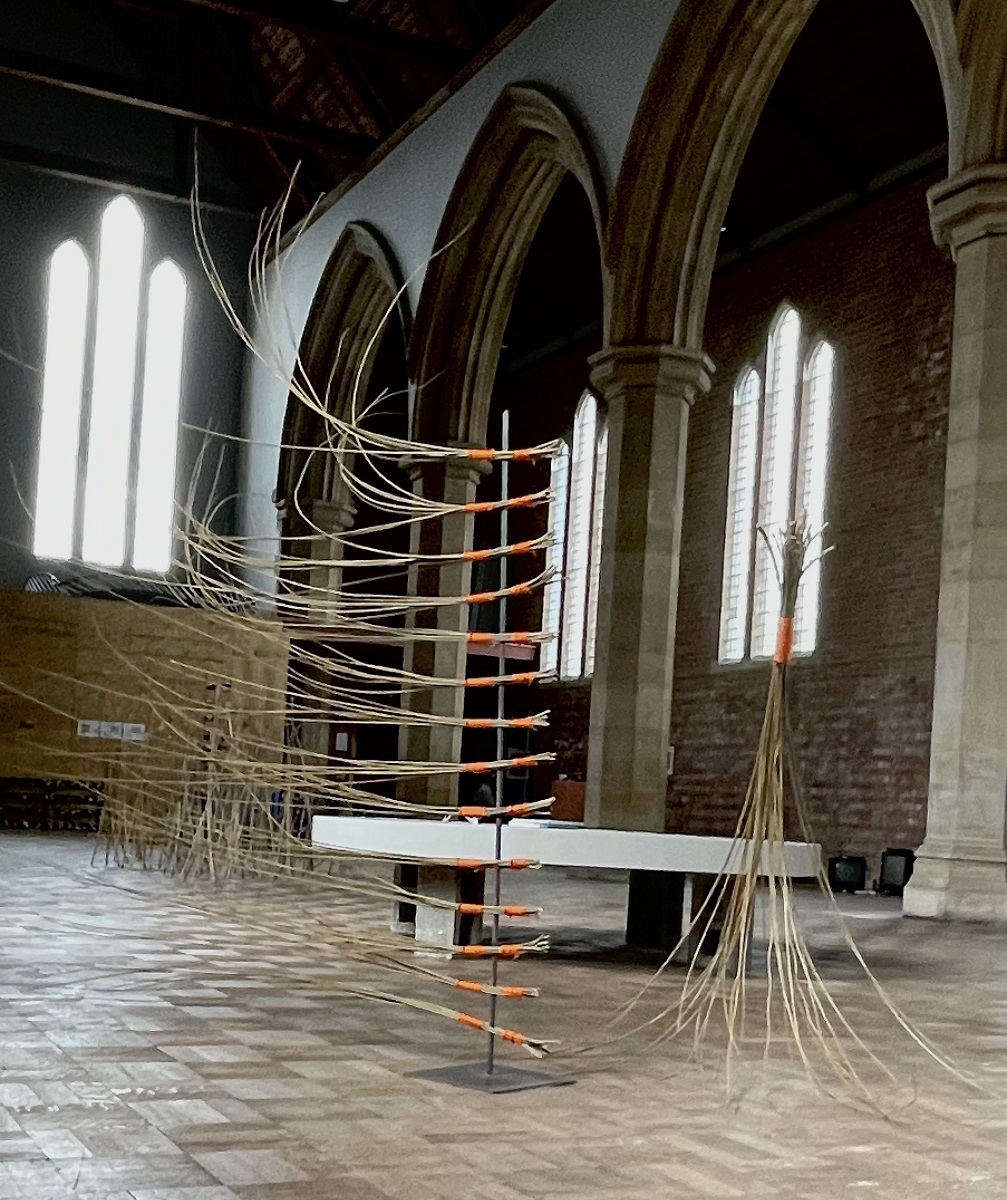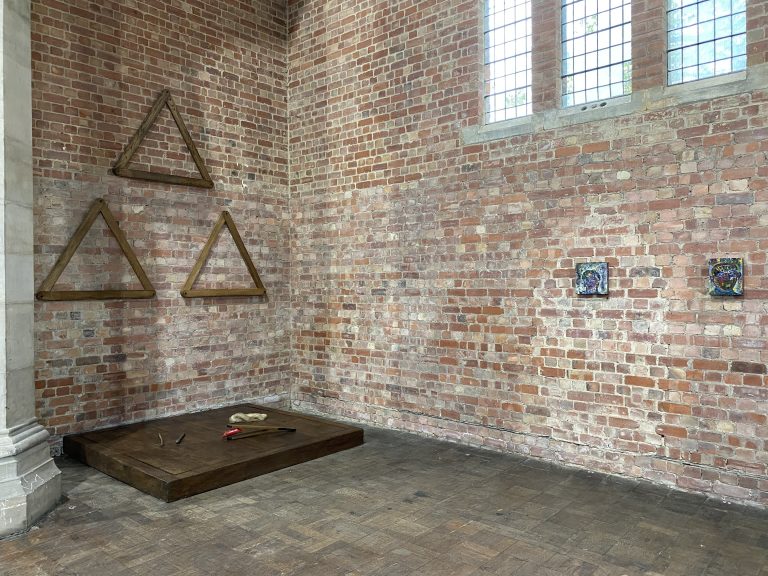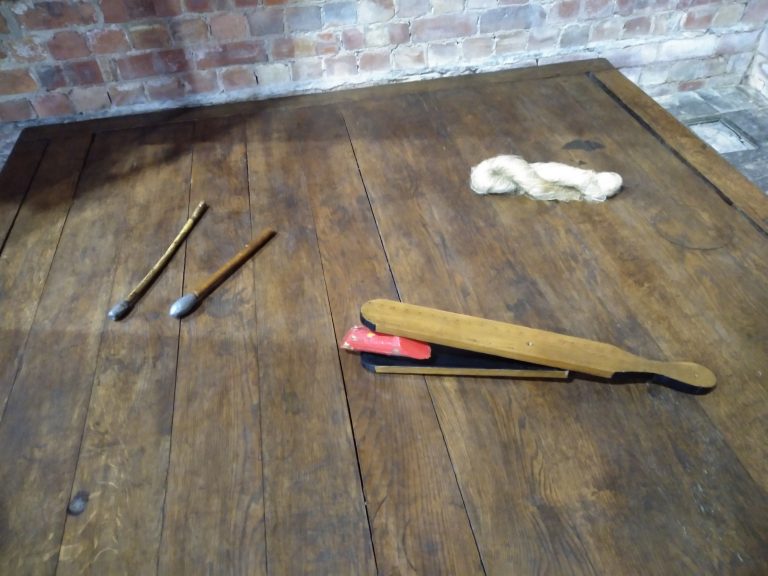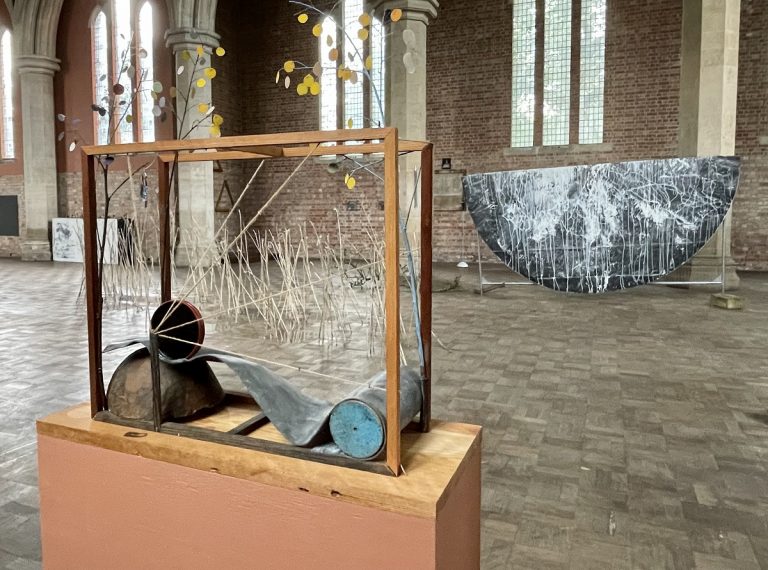In an ex-church turned social engaged art space, artists reflect on the experience of the pandemic and what might come next
Fifteen years ago artists Hilary and Marcus Hammond bought the nineteenth-century Church of St. John the Divine in Gainsborough, after spotting it for sale in the local paper’s small ads. Their vision has transformed the once derelict space into a venue for poetry nights, karate, 24-hour festivals, youth clubs, a community café and vegetable garden, sometimes all at once. At the heart of x-church’s ethos is that art can produce positive social benefits. In an era of short term, data-driven impact, the priorities of this ex-church are towards long-term community engagement and creative risk-taking.
On 22 February Boris Johnson set out his administration’s four-step plan for a “one-way road to freedom”. The credibility of Whitehall’s plans is something the people of Gainsborough have reason to be sceptical of – there has long been a lack of investment here. A town that was once England’s capital city, Gainsborough was ranked the UK’s most deprived area in 2019. 21 June was supposed to be the date the government hoped to remove all legal limits on social contact – the so-called ‘step four’. 21 June has come and gone – another government broken promise – but at x-church, the next step is already being considered.

Step 5 brings together 32 contemporary artists to share their reflections on the pandemic and our changing world. Daz Disley’s A Failure to Compute (all works 2021)presents a stark account of the UK’s Covid response. An LED readout dispassionately displays the date and total number of COVID-19 deaths since 6 March 2020. Scrolling messages display facts, newspaper headlines and quotes from politicians, before ending in a vitriolic and damning assessment of the Tory government, presumably written by the artist. Elsewhere, Lee Hassall’s delicate sculptures sit in a corner of the church but demand our attention. Blond threads are carefully fused in a Moebius-loop in A Foamless Sea, while in Tall Trees the ends of well-worn polished sticks have been encased in lead. The sculptures instil a sense of contemplation, reflecting, perhaps, many people’s shift away from consumerism and a strong sense of care on the artist’s part.

Fiona Carruthers’s Waiting for the King Tide consists of delicately poised willow gathered from Lincolnshire marshlands hitched with orange builders’ line. The work encourages us to pause and reflect, echoing many people’s renewed engagement with nature during lockdown. A different response to the land is visible in Marc Renshaw’s tiny printed digital drawings that show the impact of industrial scarring on a once rural landscape. Frank Kent shows two small sculptures on painted plinths. Like Carruthers’s and Renshaw’s work, they reference human impact on nature. In Kent’s Good Day (Yesterday) a smattering of abstracted forms stand in for a rolling landscape, sitting atop a wooden base encased in a frame; at three corners delicately crafted trees spring hopefully outwards.The attentive eye will notice that this work’s plinth is painted the same colour as the brick walls high above. This is no coincidence; during lockdown the artist was up on scaffolding decorating x-church, indicative of the sense of custodianship felt for the place by both the local and artist community.
3 images



x-church is driven by a genuine desire to deliver social good by a community that is artist-led and largely unfunded, and it is that sense of care and belonging that makes it such a special place. x-church has the impact that cultural bureaucrats declare in art funding mission statements, but rarely deliver. This year’s Turner Prize has endorsed the role art collective have in social activism and change. x-church is the sort of meaningful art collaboration that doesn’t need such artworld validation – it‘s too busy getting on with actually making social change happen.
Step 5 is at x-church, Gainsborough until 11 July
This article is part of Remark, a new platform for art writing in the East Midlands by ArtReview in collaboration with BACKLIT. Read more here and sign up for the Remark newsletter here
